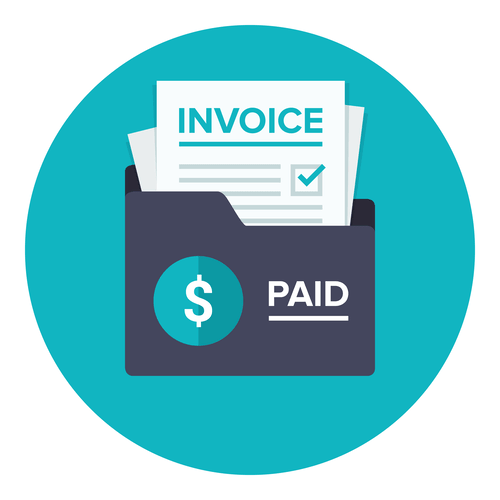Free on Board FOB Definition, Types, Contracts, Pros & Cons

If the terms include „FOB Origin, freight prepaid,” the buyer assumes responsibility for goods at the point of origin, but the seller pays the cost of shipping. Imagine the same situation above, except the agreement terms are for FOB destination. Instead, the manufacturer retains ownership of the equipment until it’s delivered to the buyer. Both parties fob shipping point don’t record the sale transaction in their general ledgers until the goods arrive at the buyer’s location. Additionally, if the goods are damaged in transit, the seller is responsible for replacing them at their own expense. The seller pays for the transportation of the goods to the destination, including freight charges and any necessary insurance.

Understanding Incoterms in International Shipping
However, if the seller wants to minimize risk and offer a complete service (including delivery), FOB Destination would be a better option. Under FOB destination, freight collect and allowed terms, the buyer pays for the freight costs, but deducts the cost from the supplier’s invoice. Under FOB destination, freight collect terms, the buyer pays the freight charges at time of receipt, though the supplier still owns the goods while they are in transit. Simultaneously, while the treadmills have not yet been delivered, the buyer has now officially taken responsibility for the goods. The buyer should record an accounts payable balance and include the treadmills in their financial records.
- On December 30, the seller should record a sale, an account receivable, and a reduction in its inventory.
- Free on Board is a shipping designation used to specify obligations and responsibilities for goods when they are shifted from seller to buyer as sea freight.
- Each Incoterm has its own set of rules and regulations that must be followed to ensure a smooth transaction.
- FOB shipping point (aka FOB origin) means that the title and responsibility of goods transfer from the seller to the buyer at the point of shipping.
Cash Flow Statement
Clearly defining the FOB shipping point in the sales contract removes ambiguity about when ownership and risk transfer. This enables a smooth handover between seller and buyer at the point of shipment origin. Freight on Board (FOB), also referred to as Free on Board, is an international commercial law term published by the International Chamber of Commerce (ICC).
FOB shipping point vs. FOB destination

In FOB Destination Point agreements, buyers often feel they’re in a passenger seat. The entire shipping process, from carrier selection to route decisions, is in the seller’s hands. Generally, FOB is generally specified in a sales agreement and is accounted for under inventory costs. FOB refers to the point of ownership transfer, while price encompasses the overall cost of goods, including manufacturing and additional freight charges.
FOB is important because it has shipping, liability, and accounting implications. A standout advantage of FOB terms is the clarity they bring to the trading table. With clearly defined points for risk and cost transfer, both parties can better understand and plan for their respective responsibilities. Factors like the mode of transportation, the nature of the goods, the relationship between the buyer and seller, and individual preferences can all influence the choice of term. For FOB Destination Point agreements, ownership transfers at the opposite end of the journey. FOB is important because it has shipping liability and accounting implications.
Why You Can Trust Finance Strategists

Cost in freight (CIF) and free on board (FOB) are international shipping agreements used when shipping goods between a seller and a buyer. CIF is an expense paid by the seller to cover the freight costs, insurance, and shipping of a buyer’s order while being transported to the buyer’s destination. FOB freight prepaid and allowed specifies that the seller is obligated to pay the freight transportation charges and they own the goods while they’re in transit. Successfully implementing either Incoterm requires careful planning and execution. When using FOB Destination, it’s crucial to communicate delivery expectations clearly and work with your supplier to ensure goods are delivered on time and in good condition.
- So, there’s a disparity in the amount of money you’ve recorded as having and how much cash is actually there.
- Once the treadmills reach this point, the buyer assumes responsibility for them.
- For FOB Origin, it’s essential to work with a reliable logistics provider to manage the shipping process and ensure goods are delivered on time and in good condition.
- FOB freight prepaid and allowed specifies that the seller is obligated to pay the freight transportation charges and they own the goods while they’re in transit.
- The determination of who will be charged the freight costs is usually indicated in the terms of sale.
- CIF (Cost, Insurance, and Freight) and FOB (Free on Board) are two widely used Incoterm agreements.
- Choosing FOB (Free On Board) shipping point as the basis for international shipping agreements offers several advantages for both buyers and sellers.
- In other words, the point of transfer is when the goods arrive at the customer’s destination.
- Specifically, FOB shipping point indicates that the buyer assumes responsibility the moment goods are loaded for departure.
- Thus, the key elements of all the variations on FOB destination are the physical location during transit at which title changes and who pays for the freight.
- The seller manages the transportation arrangements, and the buyer incurs costs only upon the goods’ successful delivery to the destination.
- This accounting treatment is important because adding costs to inventory means the buyer doesn’t immediately expense the costs, and this delay in recognizing the cost as an expense affects net income.
Clear Allocation of Responsibilities
- In addition, sellers are typically responsible for freight charges, which adds to their overall costs.
- In the FOB shipping point, ownership shifts from the seller to the buyer when the goods are loaded onto the carrier at the point of shipment.
- For example, if a company was shipping its goods to New York City, it would be written out as FOB New York.
- Free on board (FOB), sometimes known as „freight on board,” is a common agreement for international shipping.
- This means the seller retains ownership and responsibility for the goods during the shipping process until they’re delivered to the buyer’s specified location.
- The buyer only takes ownership upon the goods’ arrival at their location and acceptance of delivery.
